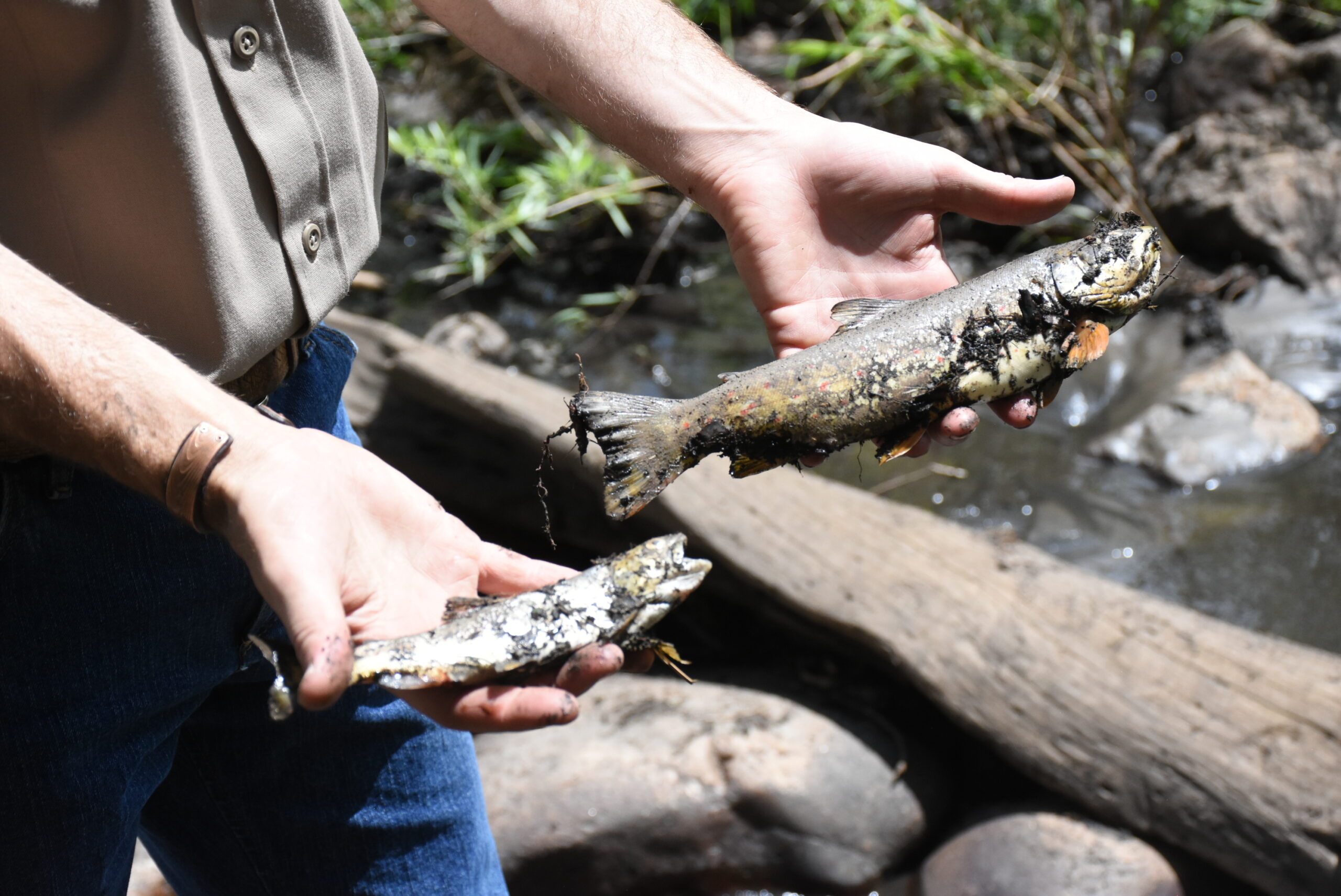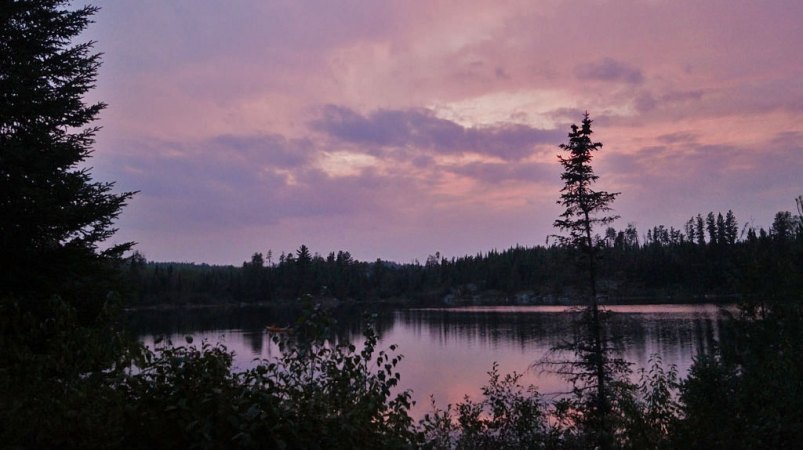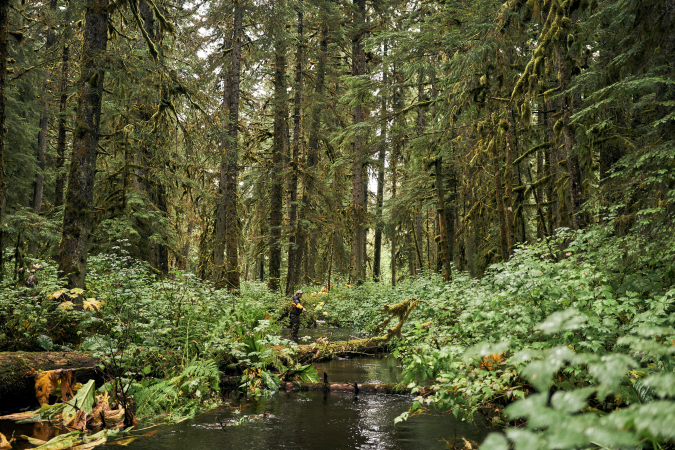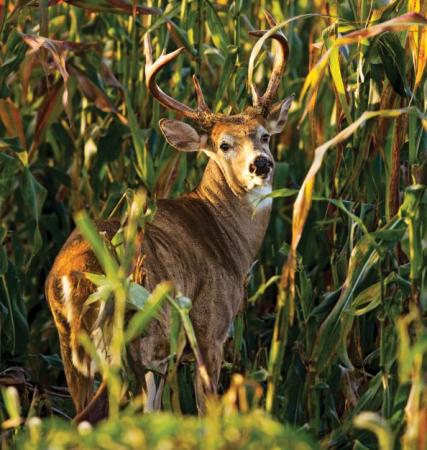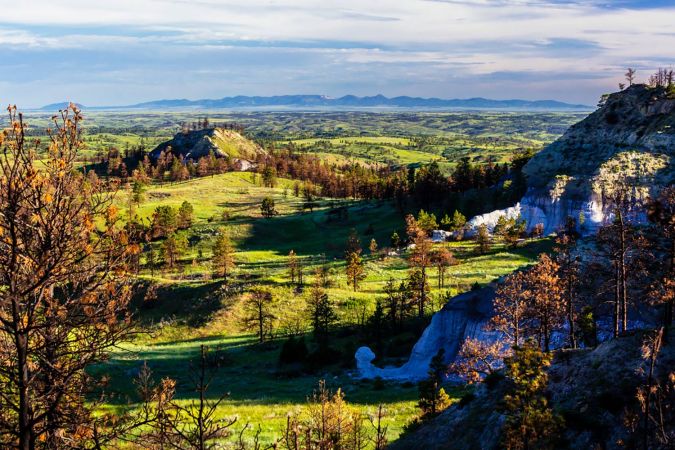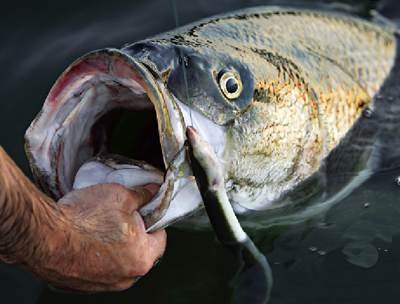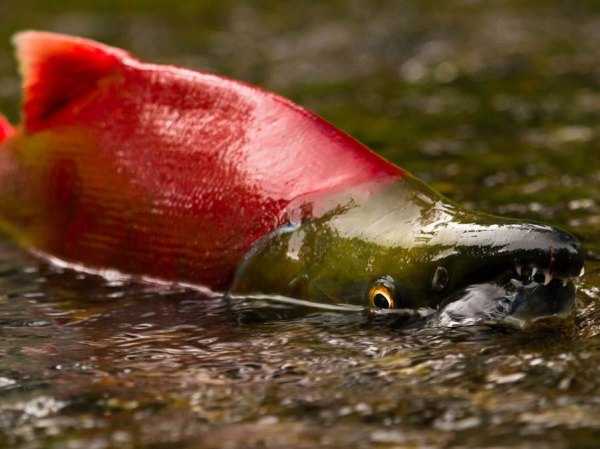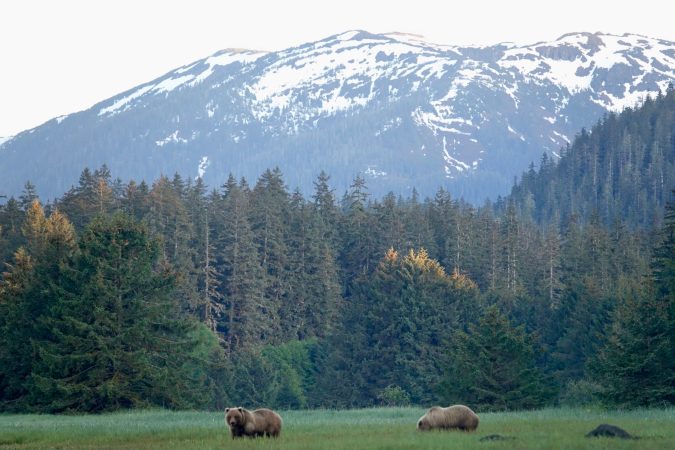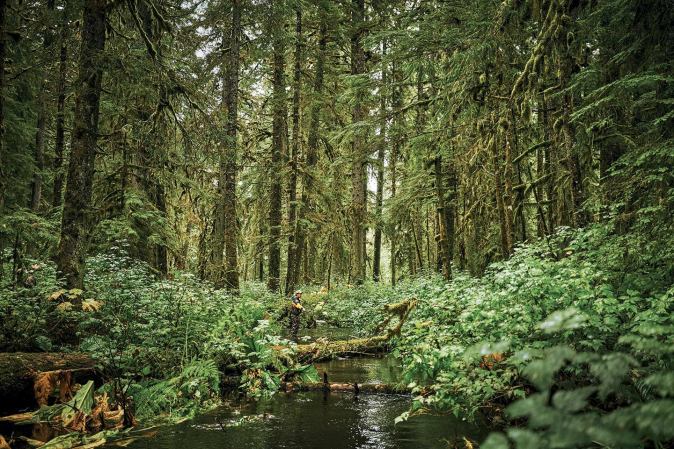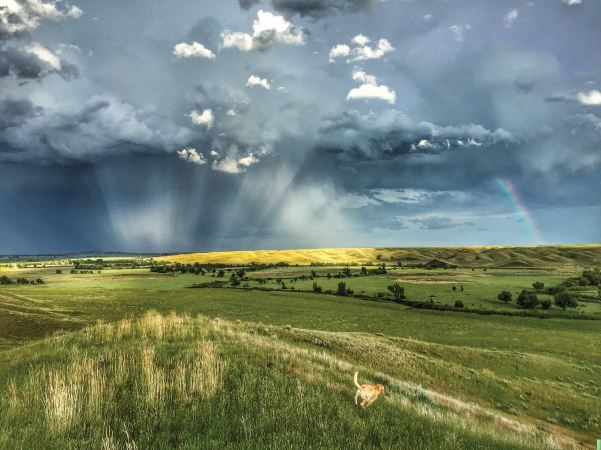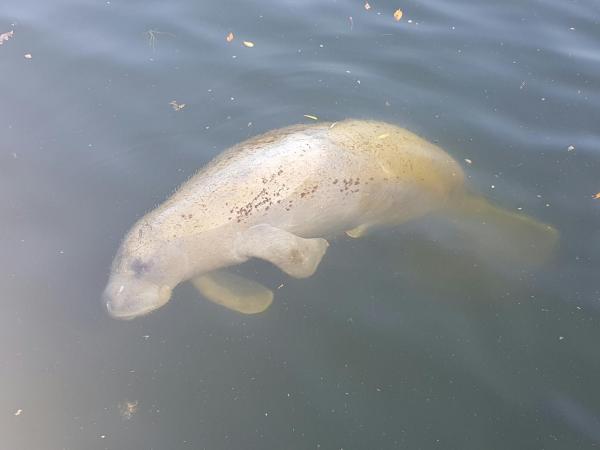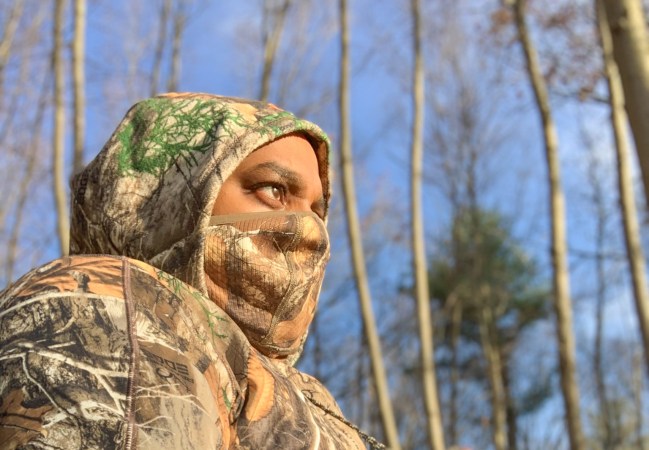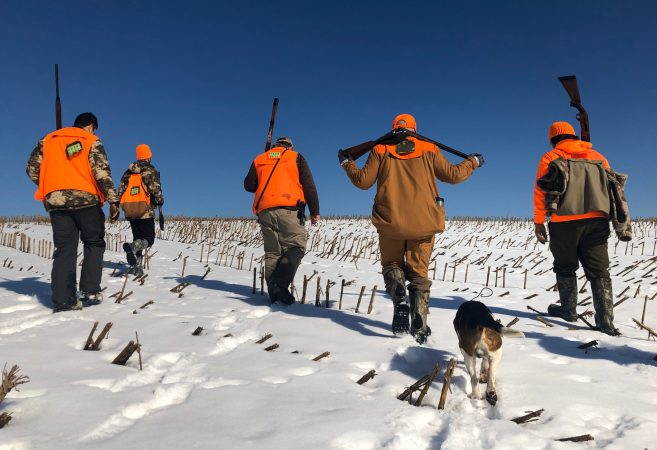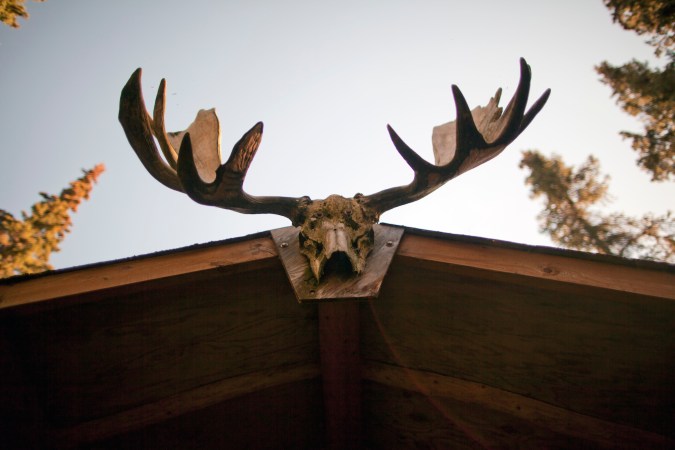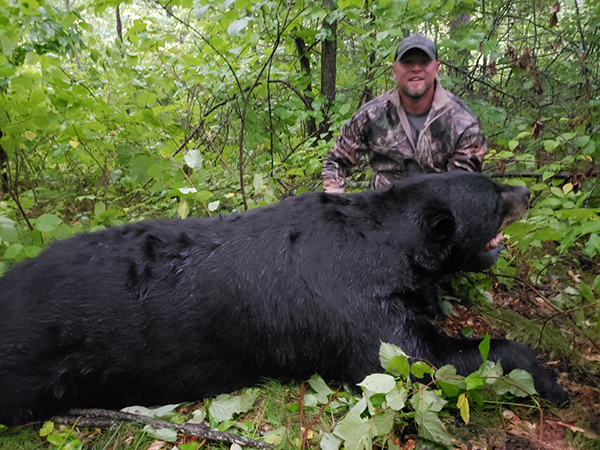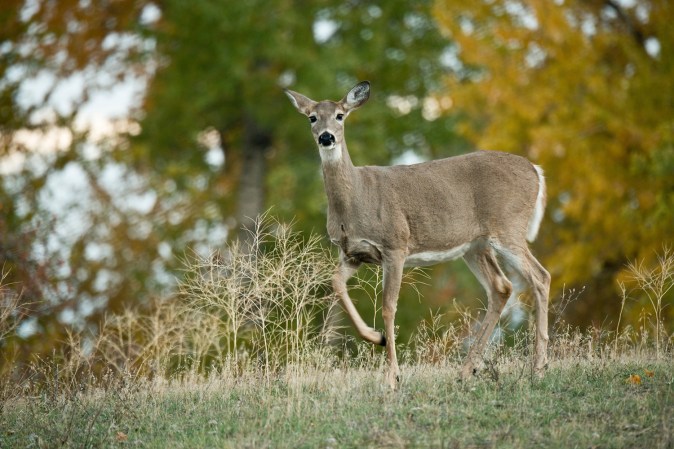Last summer, a night of heavy rainfall triggered catastrophic mudslides that killed four people and destroyed six homes along the Cache la Poudre River in northern Colorado. All that runoff covered the river in ash and debris, and it also killed off more than 80 percent of the fish, according to a recent survey conducted by Colorado Parks and Wildlife.
Officials say the lingering effects of the Black Hollow Creek mudslides are still taking their toll on trout populations.
“The plume of sediment and debris that moved downstream from that event led to fatal conditions in the river for fish due to heavy sediment loads preventing fish from exchanging oxygen across their gills, leading to the fish suffocating,” said CPW aquatic biologist Kyle Battige.
The mudslides were a direct result of the Cameron Peak Fire, which ripped through the Poudre Canyon in the summer of 2020. The fire torched more than 200,000 acres and is the largest wildfire in state history. As it burned through the watershed, it deforested the steep banks along the river and its tributaries like Black Hollow Creek, leaving many of these slopes unstable and vulnerable to erosion. This vulnerability carried over into the following summer, when heavy rains caused the slopes to give way.

Last fall, a team of CPW fisheries biologists led by Battige conducted surveys along the Poudre River to assess the situation. The team sampled 12 stations along the river. Three of these stations were above Black Hollow Creek, where the mudslides occurred, with nine located downstream of the creek.
What they found was a near-complete loss of fish below the creek. Starting at the confluence of Black Hollow Creek, biologists didn’t find a single fish for nearly 16 miles downstream.
“It was not until the Stove Prairie station, 20 miles downstream, that trout were captured,” said Battige.
The sampling indicated that fish populations as far as 42 miles downstream suffered declines. And in other parts of Colorado, the effects of past wildfires are still being felt in similar ways.
Western Wildfires and Trout Trouble
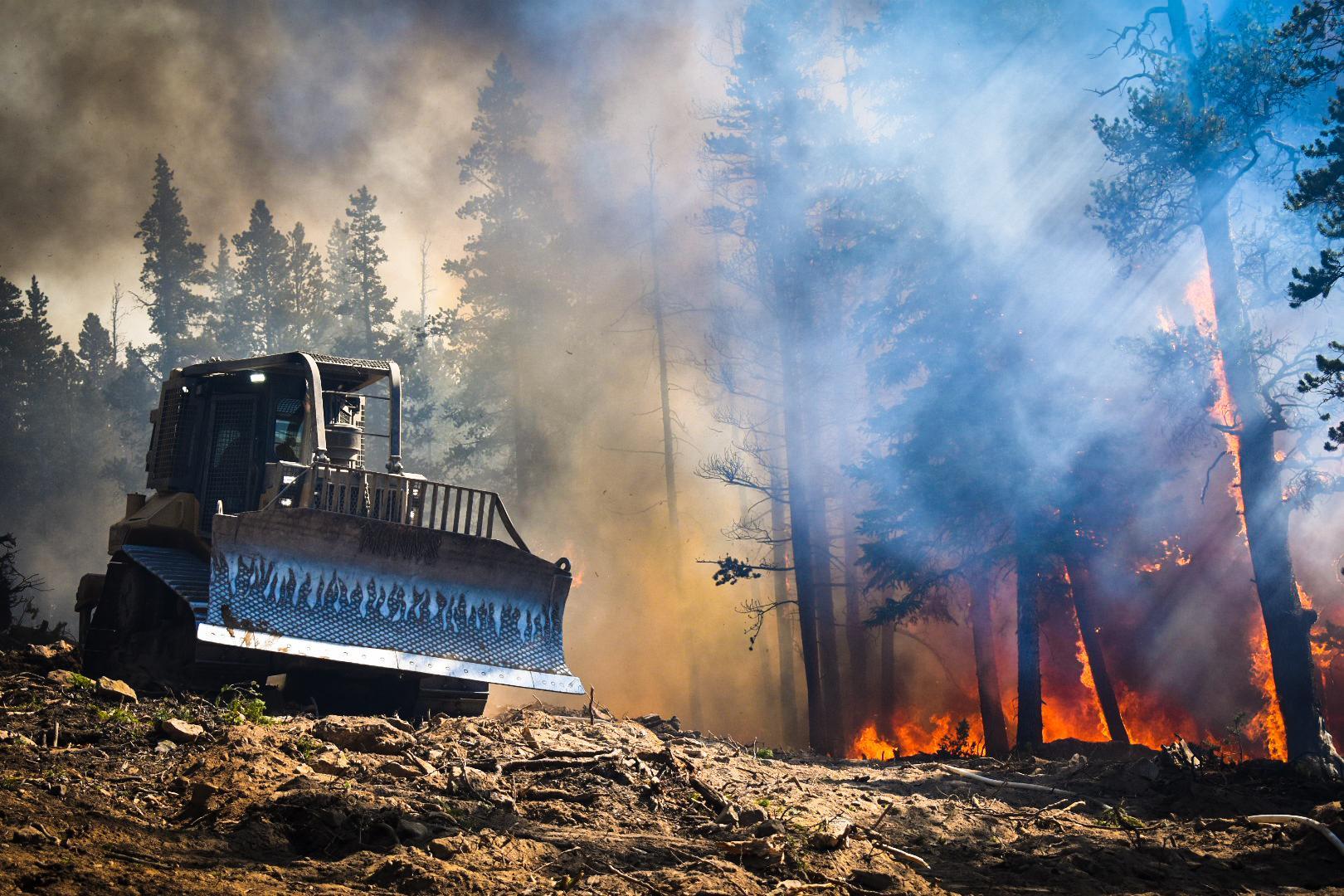
The changing climate means that wildfire seasons are becoming longer and more severe throughout the West. This year, massive blazes have already engulfed several southwestern states, including New Mexico, where the two largest wildfires in that state’s history are currently burning.
Looking at Colorado, 15 of the 20 largest wildfires in the Centennial State’s history have occurred in the last nine years, including three in 2020. In small doses, runoff from these forest fires can be a positive form of disturbance in streams, leading to increased nutrients as the system is flushed out.
A recent study by the US Forest Service indicated that fire can sometimes be a regenerative force for fish species. Salmonid species such as bull trout and cutthroats require a certain amount of disturbance and complexity in their habitats to regenerate.
“Pick any creature and it’s going to need some level of habitat complexity,” said Rebecca Flitchcroft of the Pacific Northwest Research Station. “Many of the things we’ve done to simplify habitats have reduced opportunities for individuals to express their natural adaptation to disturbance in complex systems.”
A certain amount of fire disturbance can actually create new food opportunities, the study found, while increased sediment loads in the water can stimulate the growth of aquatic vegetation, allowing fish to thrive in the revitalized ecosystem.
Problems occur, however, when an excessive amount of runoff happens all at once. When flash floods push ash, dirt, and debris into rivers, these sediments can block sunlight and clog fish gills, effectively choking fish populations. This combination of events is what caused the massive die-off in the Poudre River, according to CPW.
“There was a lot of debris, a lot of sediment and ash that came down the river, likely starving the fish of oxygen,” said Battige.
Wildfires can also compound issues with drought by raising water temperatures and lowering oxygen levels. Last summer, Outdoor Life reported on the Yampa River in Colorado, which is still reeling from years of prolonged drought. The drought has created higher river temperatures in the region, leading to lower fish survival rates for species like trout that depend on cold, highly oxygenated water.
Read Next: The Future of Trout Fishing in the West Could Be in Hot Water
These increased river temperatures can occur immediately after fires, when tree cover is diminished and surface temperatures rise. And higher river temperatures often lead to fish kills.
“Stream fish, including trout, can be killed directly from the heat of the fire,” fish ecologist Dr. Ashley Rust told Trout Unlimited last year.
A River of Hope
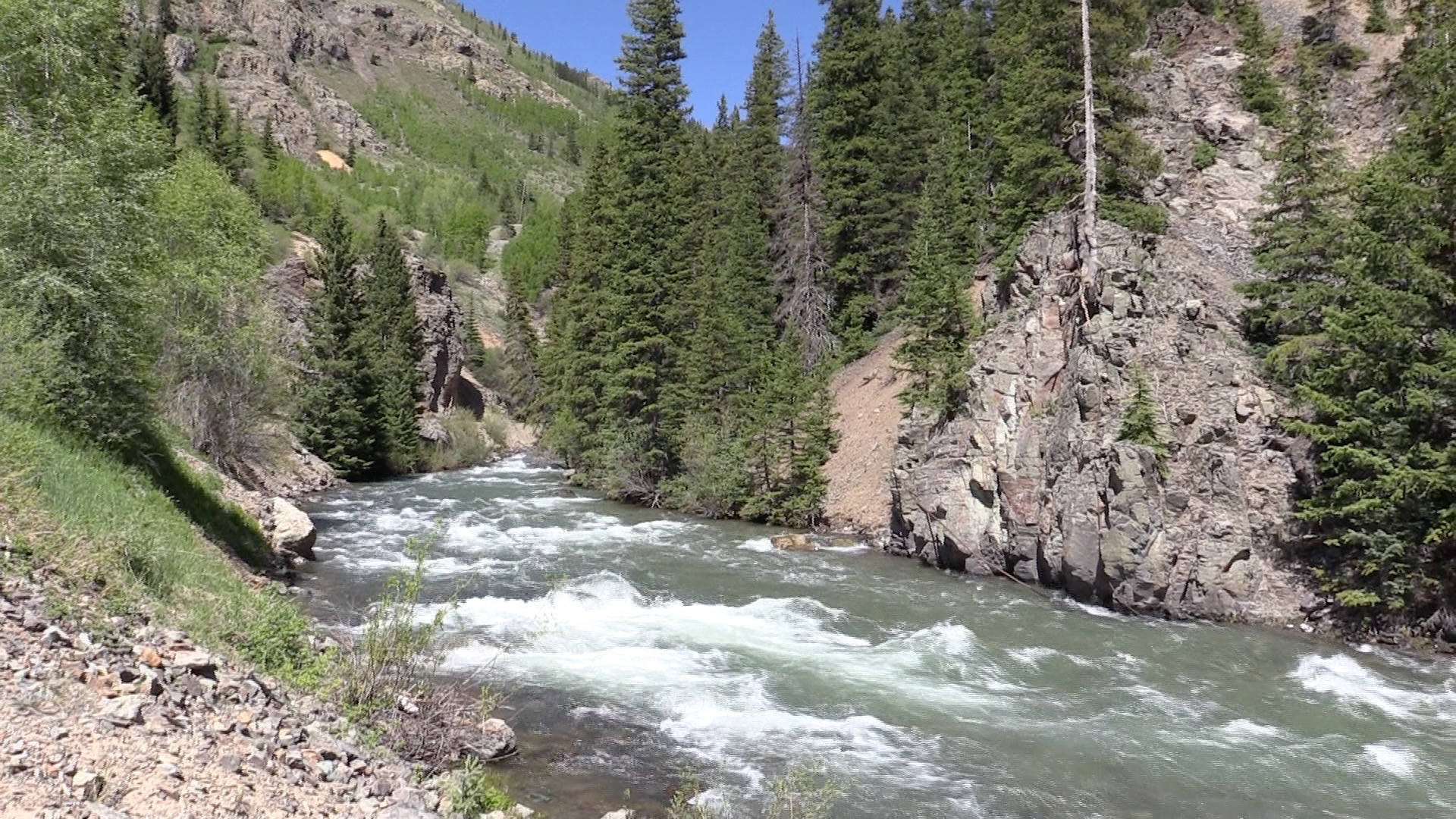
In 2018, the 416 Fire scorched 54,000 acres of land near Durango in southwest Colorado. Following the wildfires, heavy rainfall triggered mudslides that caused ash and debris to runoff into the Animas River, a Gold Medal river that runs from the San Juan Mountains into New Mexico. This runoff choked fish populations, causing an 80 percent die-off in the river that was similar to what biologists saw in the Cache la Poudre last year.
But last fall, another CPW crew conducted electro-fishing surveys along the Animas River and the results were overwhelmingly positive. Species appeared to rebound significantly thanks to increased stockings and voluntary catch-and-release programs.
“The bluehead sucker abundance was incredible, the best we have seen in years,” said CPW aquatic biologist Jim White. “We have also seen a rainbow trout population really rebound—the best rainbow [count] we have seen in the Animas for years.”
Although sediment continues to wash into the river from the fires, the river is quickly rebounding, and it could be only a few years away from regaining its Gold Medal status. This provides hope for other streams across the state that are dealing with the consequences of wildfire, and researchers on the Poudre are optimistic that the river system will stabilize within a few years.
“It will come back with time. It is hard to say how long those impacts will be,” said Battige. “The 2022 spring runoff is flushing fine sediment deposited from the Black Hollow event downstream and helping reset the river.”
For now, CPW is recommending that anglers avoid the regions of the Poudre River that were affected by the mudslides. The agency will begin restocking rainbow trout this summer in order to rebuild the fishery.
Meanwhile, forecasters are predicting another brutal fire year in the state. Meteorologists issued an “extremely critical” fire weather warning on April 21 for eastern Colorado and New Mexico.
“We have to get used to a future with more fires,” Rust told TU. “It is hard to watch, but the change that follows as the landscape recovers from black and scorched to a fresh bright green, scattered with wildflowers and new young tree growth is awe-inspiring.”
